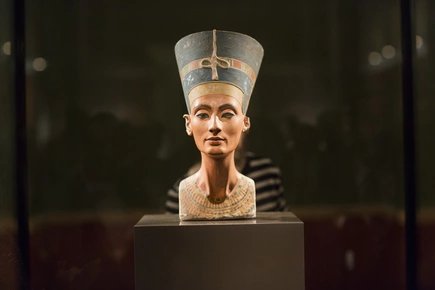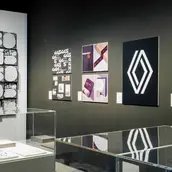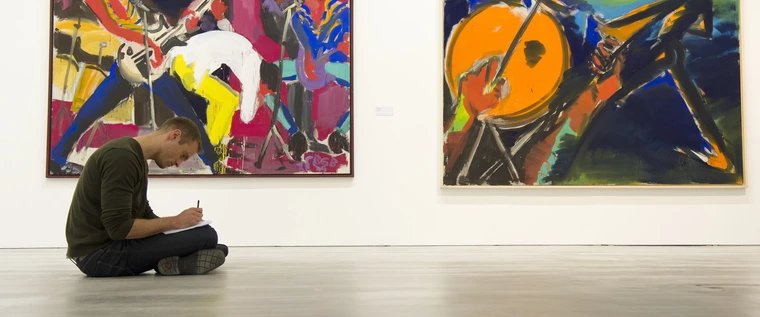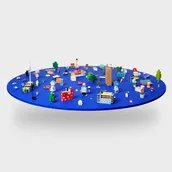
An anniversary, such as the 40th anniversary of the Kunstgewerbemuseum (KGM), which opened in 1985 in the new building designed by Rolf Gutbrod at the Kulturforum in West Berlin, is often an occasion for a celebratory retrospective. The KGM chooses a different path and invites active engagement with the complex aspects not only of its history, but above all of its future.
The exhibition "Visitation: 40 Years of KGM at the Kulturforum" is conceived as a kind of séance – a collective listening to the echoes of the past, the potential of the present, and the museum's still-unwritten futures. Instead of a predetermined narrative, it opens up a space for the complex questions that have shaped this place for four decades.
Visions and Ruptures
The history of the Kunstgewerbemuseum is marked by visions and ruptures, not least by the former division into East and West Berlin, which resulted in two museum locations that still exist today – the Kulturforum in the west and Köpenick Palace in the east.
The exhibition explores the museum's founding idea as an institution designed to cultivate the taste of artisans, its original driving forces as an educational institution with a collection of models, and the conflicts that accompanied such a vision deeply rooted in the 19th century. Instead of presenting a complete version of the museum's history, however, elements of the collection, its methodology, and its institutional past are presented in a way that allows the museum's multifaceted nature to come alive.
What remains of this founding idea, and how was it transferred into the 20th century? To answer this question, one can consult the Kulturforum, which is not only a museum location but also a site of diverse controversies and debates: a testament to a vision of the future whose current reality reflects the numerous compromises and unresolved questions in the history of the Kunstgewerbemuseum.
Visitation
The complex construction history of today's Museum am Kulturforum, spanning nearly 20 years, was accompanied by conflicts and potentials that were linked to new demands on the museum in general. These concerned conservation and structural requirements, but above all the museum's urgent mission and equal aspiration to be a democratic place of education.
The exhibition is particularly dedicated to these social and museological realities, for which Rolf Gutbrod found a groundbreaking and highly acclaimed solution with the installation of an educational gallery through the building. The exhibition illuminates the successes and failures of a built vision and simultaneously lifts the curtain to provide insights into the reality unfolding in the restoration workshops and offices.
The Future as an Open Question
The exhibition looks ahead and understands the future as an open process with considerable scope for design. In light of necessary upcoming changes, such as renovation, refurbishment, and a reorientation of the museum's content, the exhibition puts the future of the KGM up for discussion. It is not a final answer, but an open question posed in the language of the institution: as an invitation to the public to participate in the next chapter.
Team
Coordination and Co-Curation: Ann-Kathrin Illmann, Carina Kitzenmaier, Dr. Claudia Kanowski, Kevin (Finn) Strüder, Dr. Sibylle Hoiman
Graphic Design: Kevin (Finn) Strüder, Carina Kitzenmaier
A special exhibition of the Kunstgewerbemuseum – Staatliche Museen zu Berlin
Additional information
Price info: Museum ticket Museum of Decorative Arts.
Kulturforum all exhibitions: 22,00 €
Price: €10.00
Reduced price: €5.00
Reduced price info: Kulturforum all exhibitions: 11,00 €
Children and young people up to the age of 18 are admitted free of charge.
Kulturforum all exhibitions: 22,00 €
Price: €10.00
Reduced price: €5.00
Reduced price info: Kulturforum all exhibitions: 11,00 €
Children and young people up to the age of 18 are admitted free of charge.
















